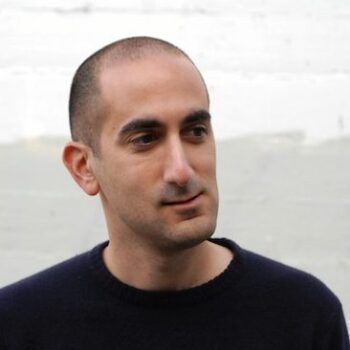
Jon Mooallem is not a biologist or an outdoorsman or even an avid camper. Growing up in suburban New Jersey, the closest he got to wildlife was watching episodes of the iconic PBS series Wild America. But that hasn’t stopped the now thirty-four-year-old contributor to the New York Times Magazine from writing extensively on animals and the natural world. If anything, his lack of expertise has been a boon to his work. Like all great storytellers, he’s more anthropologist than zoologist. Even when he’s writing about Hawaiian monk seals or homosexual albatrosses, his real subject is always homo sapiens and what our attitudes about those animals say about us.
The playful, tortuous subtitle of Mooallem’s first book, Wild Ones: A Sometimes Dismaying, Weirdly Reassuring Story About Looking at People Looking at Animals in America makes no secret of this human-centric focus. But as Mooallem narrates the inspiring, heartbreaking, and often just plain strange efforts of people who’ve devoted their lives to saving endangered species, the question of who exactly the “wild ones” are in the book becomes uncomfortably hard to answer.
Mooallem was kind enough to take a break from caring for his newborn second child to talk about Wild Ones at a cafe near his home in San Francisco.
***
The Rumpus: I had to remind myself several times as I was reading your book that it was nonfiction. Some of the things you describe are really bizarre. You’ve got Martha Stewart chasing polar bears around the Canadian tundra. You’ve got men dressing up like whooping cranes and flying in little planes with them. You even describe something called a “copulation hat.”
Jon Mooallem: In the ’70s, people started realizing that DDT was thinning out bird’s eggs. Peregrine falcons were one of the birds affected by this, so they created a captive breeding stock. But breeding animals can be a lot harder than you might think, and they found, through this weird process of trial and error, that they could wear this leather helmet. It looks kind of like a cross between a rugby helmet and maybe the helmets they wear in the Cloud City in The Empire Strikes Back. The male bird would land on the hat and be coaxed to ejaculate by the human handler into the hat so that they could inseminate other birds. Somehow, I find it weirdly symbolic of a lot of the work I’ve written about, both in its ingenuity and its total absurdity.
Rumpus: And yet it worked.
Mooallem: It did. There are peregrine falcons around now. We have them here in San Francisco, in large part due to the persistence of some very brave ornithologists wearing the copulation hat for more than a decade.
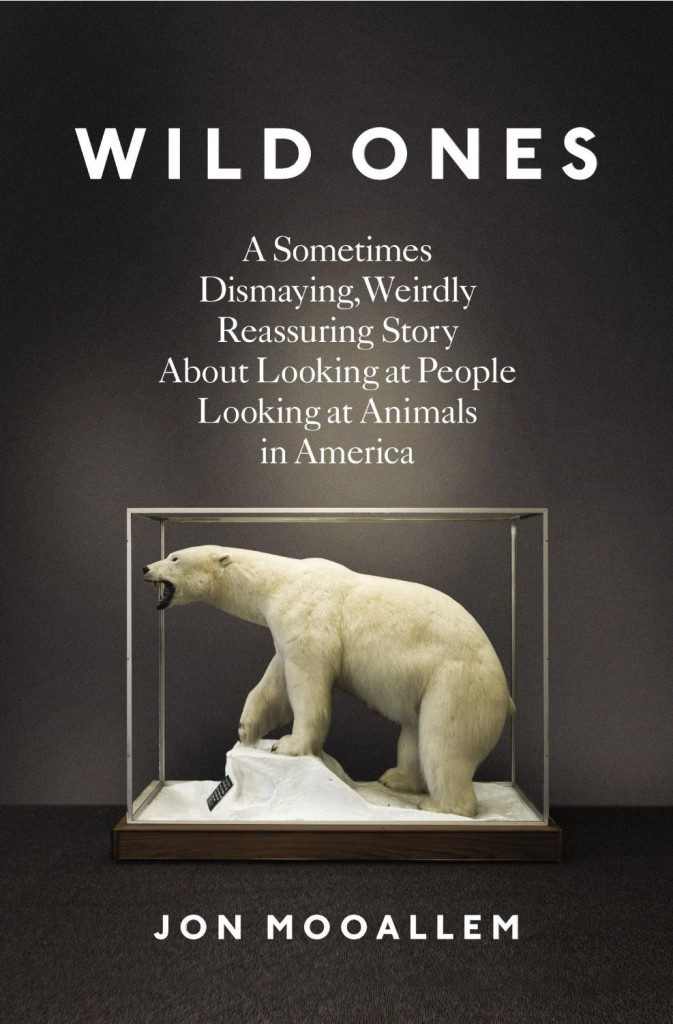 I think there are two levels of these sorts of interventions. You’ve got the very hands-on manipulations, like the copulation hat and like Operation Migration, where they’re reintroducing whooping cranes. Whooping cranes are the largest birds in North America. In the 1940s, they were down to the teens in terms of number of birds left, and so people started breeding them in captivity, which had its own copulation hat-esque obstacles, but then they realized, how are we going to get these birds back in the wild? They usually learn migration from their parents, but their parents were bred in the lab, too. So they hit upon this solution of training the birds to fly behind men flying ultralight airplanes. But the men have to do it in costume, so that the birds won’t get acclimated to people.
I think there are two levels of these sorts of interventions. You’ve got the very hands-on manipulations, like the copulation hat and like Operation Migration, where they’re reintroducing whooping cranes. Whooping cranes are the largest birds in North America. In the 1940s, they were down to the teens in terms of number of birds left, and so people started breeding them in captivity, which had its own copulation hat-esque obstacles, but then they realized, how are we going to get these birds back in the wild? They usually learn migration from their parents, but their parents were bred in the lab, too. So they hit upon this solution of training the birds to fly behind men flying ultralight airplanes. But the men have to do it in costume, so that the birds won’t get acclimated to people.
Then there’s this other kind of intervention, which is more of a psychic intervention, where the way we talk about these animals and feel about these animals can really play into their ecological situation. It’s more abstract, but that was the case with the Martha Stewart thing. I was in Churchill, Manitoba where there’s an NGO trying to spread the word about climate change, and they’re using polar bears as a symbol of the problem. And we wound up chasing Martha Stewart in these little buggy-like vehicles across the tundra so that they could make sure that she was interviewing the right scientists and putting across the right talking points on her show. The polar bears have PR handlers these days. And I’m sure that, for them, that kind of intervention is just as important as the copulation hat was for peregrine falcons.
Rumpus: You write that animals’ survival in this day and age depends “more on Barnum than Darwin.” What do you mean by that?
Mooallem: The level of compassion and persistence and passion that we dedicate to these species is going to do more for them than any ecological force. Our imaginations are an ecological force now. And to stir that up, you need salesmanship, whether it’s as extreme as the Martha Stewart example or something as simple as putting the panda on the logo of the World Wildlife Federation. There are certain creatures that we care about and certain ones that we simply don’t care about.
Rumpus: We don’t care about the Hawaiian blue-tailed skink, for example.
Mooallem: No. It’s gone. And I didn’t know that. Here I am writing a book on this subject, and I didn’t even know what it was until like two years into the process.
Rumpus: So there’s this kind of species-ism, where we put our energies into saving so-called “charismatic megafauna” like polar bears or pandas or bald eagles.
Mooallem: Yes. And I’m not necessarily criticizing that. I think it’s miraculous that we care about any of these animals. We don’t have to. And for most of human history, we didn’t. So I think it’s a little funny when you have these conservationists saying, “Pity the poor reptile or the poor insect that humanity can’t be bothered to care about.” I mean, isn’t it amazing that we care about all of the things that we do care about? But we don’t really acknowledge that our interest in an animal is vital to its survival. That’s literally the case scientifically and legally, in tons of different ways. Human interest is the key to survival now on earth.
Rumpus: At one point in the book, you call the efforts of Operation Migration—the guys flying planes in whooping crane costumes—”sublime,” but you say you meant the word in a different way than the philosophers meant by the term.
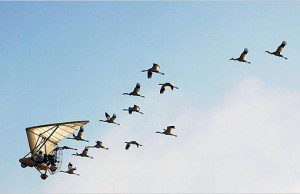 Mooallem: Well, I didn’t actually know what the philosophers meant…but I checked it out on Wikipedia and I think that it was originally applied to natural landscapes like waterfalls and mountains, and being overwhelmed by the grandeur of the natural world. I had a similar feeling watching these airplanes fly in front of a flock of birds. I think a lot of people do. You feel a kind of wonder, an excitement. You can’t believe it’s happening, so I used the term “sublime” even though I was looking at something that is not natural at all, and is in fact meant to make up for the fact that we’ve destroyed what was natural.
Mooallem: Well, I didn’t actually know what the philosophers meant…but I checked it out on Wikipedia and I think that it was originally applied to natural landscapes like waterfalls and mountains, and being overwhelmed by the grandeur of the natural world. I had a similar feeling watching these airplanes fly in front of a flock of birds. I think a lot of people do. You feel a kind of wonder, an excitement. You can’t believe it’s happening, so I used the term “sublime” even though I was looking at something that is not natural at all, and is in fact meant to make up for the fact that we’ve destroyed what was natural.
Rumpus: Isn’t that wonder also about connecting with something so different than us, so other?
Mooallem: Yeah. I think there is a real craving for that kind of experience of otherness in the world right now, even if it’s just a hike on a nature trail. There’s a hunger to be in the presence of something that’s beyond you and beyond your grasp.
Rumpus: I think that craving might be called anxiety. We’re anxious to connect to the otherness of the natural world because we’re terrified that we’ve fucked it up beyond repair.
Mooallem: Without a doubt. I think that motivates a lot of the recovery efforts I was writing about. It’s not just the particular species at stake but that, if we let go of this one, where does that leave us? Each battle becomes a battle of principle that cannot be lost.
Rumpus: This anxiety seems to be especially pronounced here in America, and I think it’s no accident that you made sure to include the phrase “in America” in the subtitle of the book, even though a good chunk of it is actually set in Canada. Our identity as Americans is so connected to the bounty and grandeur of our wilderness, and I think people are really freaked out that we’ve spoiled it. I see that anxiety reflected in all the reality shows on TV these days about Alaska and survivalists. People are desperate to believe that we still have that wildness in us.
Mooallem: As soon as something is almost gone, people grasp onto it the hardest. [America] was the place where people came after all the Old World countries had already extinguished their wildlife. It was a fresh start, where wildlife was so abundant that colonists were writing ad copy back to Europe about how they could sweep fish out of the ocean with a broom. You could make an argument that that’s where the American dream starts. It wasn’t just this vague belief. It was actually a matter of math. There were X amount of animals and so much fewer people, you could get by just by showing up.
Rumpus: Speaking of colonial America and its relationship to nature, another point in the book where I had to remind myself that I was reading nonfiction was the story of Thomas Jefferson and the mammoth.
Mooallem: Mammoth fossils were being discovered around the time of the signing of the Declaration of Independence, and Thomas Jefferson and some other Founding Fathers figured they must still be out there somewhere in the whole two-thirds of North America we hadn’t set foot in yet. In fact, when Lewis and Clark set out, they had instructions to keep their eyes peeled.
Rumpus: For mammoths.
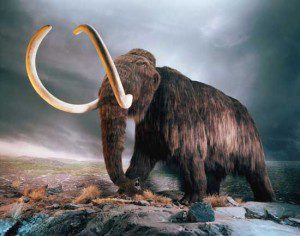 Mooallem: Yes. The mammoth became kind of the first bald eagle, the first species people really identified with America because it was so big and powerful. It was everything that a new country wanted to see itself as. And it hit people hard when more and more evidence started emerging that mammoths were, in fact, extinct. They had to change the mammoth story and rewrite their feelings about it. The new story went that instead of America being so magnificent that it was filled with mammoths, it was actually an empty place just waiting for white settlers to take it over. God had wiped the mammoth out to clear the way for us. It’s another example of the narratives we build around creatures.
Mooallem: Yes. The mammoth became kind of the first bald eagle, the first species people really identified with America because it was so big and powerful. It was everything that a new country wanted to see itself as. And it hit people hard when more and more evidence started emerging that mammoths were, in fact, extinct. They had to change the mammoth story and rewrite their feelings about it. The new story went that instead of America being so magnificent that it was filled with mammoths, it was actually an empty place just waiting for white settlers to take it over. God had wiped the mammoth out to clear the way for us. It’s another example of the narratives we build around creatures.
Rumpus: And the real irony is that, according to some theories at least, the mammoth was wiped out by people.
Mooallem: That’s right. People wiped the shit out of this place long before any European settlers came. There were all sorts of Pleistocene megafauna walking around, and then humans developed a new kind of stone point that enabled them to bring down bigger and bigger animals. So, basically, we’re living in this impoverished ecosystem that preceded the wasteful, reckless white man that is so easy to vilify. We were already down to the dregs before any of our grandparents or great-great-great grandparents got here.
Rumpus: So this cycle of people damaging the natural world and causing extinction goes back a long way.
Mooallem: That’s always the big question and a giant hole in a lot of the reasoning. If you’re going to say that things aren’t like they used to be, when exactly are you referring to?
Rumpus: It complicates the whole idea of “saving” one species or another.
Mooallem: Exactly. As does the other stuff we were talking about, this kind of perpetual intervention. Can we really say that we’re saving the whooping crane if we’re breeding it in a lab and then flying it around with planes? I mean, we’ve saved it from disappearing. But it’s not the same thing.
Rumpus: The best example of this dilemma comes in the second part of the book, where you focus on the Lange’s metalmark butterfly. This is a very fragile creature that only lays its eggs on a specific plant growing on sand dunes near Antioch, California. But the sand dunes are almost all gone. There’s a drywall factory there. And yet, the federal government has spent millions trying to keep this particular butterfly from going extinct.
Mooallem: There is a strong case to make for keeping that butterfly where it is, but it’s not scientific. I could not find a scientific justification for it. It just doesn’t matter. And even if it did matter, the context in which it did matter is completely gone. This butterfly is not like the panda bear or the California condor. But the people involved with it are very passionate and it’s the policy of the U.S. government to save it. It has all the same protections as a whale or grizzly bear.
Rumpus: That brings me to the word “wild.” As the book goes on, the definition of that word starts to get slipperier and slipperier. The creatures we want so badly to keep wild, like polar bears or whooping cranes or certain butterflies, need such finely-tuned environmental conditions that, without constant human intervention, they would perish.
Mooallem: We’re in a very paradoxical place. If wildness is the thing we’re passionate about keeping in the world, it’s up to us to preserve it. That doesn’t seem to make any sense. But then again, that’s where we’re at. It’s not going to change.
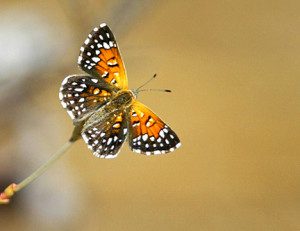 These animals are not necessarily hard to save. They’re just hard to save in a way that conforms with our romantic ideas about their wildness. You could take the plant that the Lange’s metalmark butterfly lays its eggs on and grow it in pots in my backyard, and then bring the butterflies and I’m pretty sure they’d be just fine. You could do that anywhere. You could do it in Central Park, in Golden Gate Park, in Asia. As long as that plant is there, the butterflies will be there. But they’re not going to live at Antioch Dunes, which is the one place they lived before humans showed up. But why isn’t that option on the table? Is saving the butterfly in that way better than doing all the backbreaking work we’re doing now?
These animals are not necessarily hard to save. They’re just hard to save in a way that conforms with our romantic ideas about their wildness. You could take the plant that the Lange’s metalmark butterfly lays its eggs on and grow it in pots in my backyard, and then bring the butterflies and I’m pretty sure they’d be just fine. You could do that anywhere. You could do it in Central Park, in Golden Gate Park, in Asia. As long as that plant is there, the butterflies will be there. But they’re not going to live at Antioch Dunes, which is the one place they lived before humans showed up. But why isn’t that option on the table? Is saving the butterfly in that way better than doing all the backbreaking work we’re doing now?
The fact is that a lot of the people working on these recoveries are career conservationists. And a lot of time, it takes an outsider to say, “Hey, what are we really doing here?” I felt like I was engaging a lot of these people in conversations they had been dying to have for a long time, but they just haven’t had the opportunity to. They’re just not prompted to think this way within the bureaucracies of their work.
Rumpus: A lot of the older conservationists you profile have become disillusioned. They started off young and idealistic. But as their careers have gone on, they’ve lost a fair amount of hope and drive.
Mooallem: I tracked down some battle-scarred conservationists and for the most part, they weren’t cheery. A lot of them failed to do what they set out to do. And even the ones that had success, it was often indirect. So I don’t blame them for feeling that way, but I’m glad I could write about them in a different context and show what role they did play.
And I will say that even though some of them told me they had given up, they really hadn’t given up. That kind of moral energy doesn’t go away just because you get beaten to shit trying to exert it on the world, and that’s an amazing thing. It makes me proud to be a human being. I would talk to all these sour old men and women, and I would leave feeling exhilarated to see how this process plays out every generation. People start out full of energy, they meet obstacles, but then someone else comes and they pick up the baton and keep going.
Rumpus: Is that the “weirdly reassuring” part of the story you refer to in the title?
Mooallem: Yeah. It goes back to this idea of the sublime. For the people who have worked on Operation Migration or the guy who spent fifty years at Antioch Dunes with the Lange’s metalmark, these things can be completely dispiriting. But then you zoom out and you see the that there is this fight that we’re all in together. I find that incredibly reassuring. Humankind can’t control the entire world and solve all of its problems, but we’re engaged in this big ecological bar fight where we’re trying to do this stuff.
Rumpus: Isn’t the bar fight really within ourselves, though? Isn’t it really a fight over what kind of animals we are? I just read today that carbon levels in the atmosphere are higher than they’ve been in at least 800,000 years.
Mooallem: Stuff is fucked up. I’m not trying to be rosy about it. I can’t explain why but being around these people, despite their imperfections and disagreements, who are engaged in questions of how humanity should exist in the world, is completely life-affirming.
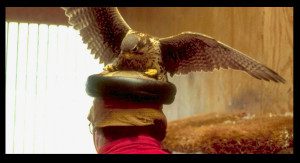 I don’t have the most optimistic outlook on the future. Part of the reason I wrote this book is because I had just brought a kid into the world and it got me thinking about these things in a different way. That doesn’t mean I think things are going to turn out great. I can still be pessimistic but at least I can feel better about being pessimistic sometimes. That strikes me as the secret to a lot of things in life, being able to sit with your fear.
I don’t have the most optimistic outlook on the future. Part of the reason I wrote this book is because I had just brought a kid into the world and it got me thinking about these things in a different way. That doesn’t mean I think things are going to turn out great. I can still be pessimistic but at least I can feel better about being pessimistic sometimes. That strikes me as the secret to a lot of things in life, being able to sit with your fear.
I hope I’m not mistaken for a kind of Pollyanna, but I think there’s a big space between feeling like the world is coming to an end and feeling like we don’t have to worry at all. And I think I’m getting better at occupying that space.
Rumpus: Getting back to the American relationship to wilderness. We exterminated thirty-million buffalo—or bison, to be more precise. It struck me that the guy who led the effort to save them is a perfect embodiment of our conflicted relationship with nature and animals.
Mooallem: William Temple Hornaday. I want to write a whole book about him. He was a taxidermist at the Smithsonian, a young guy, maybe thirty-two. And he finds out there’s only three hundred or so buffalo left, and he says, “I’ve got to do something about this—I have to go to Montana and kill a bunch of them!” He decides to stuff these things so that his children and grandchildren can know them after they’re gone. But a few years down the line he realizes that, hey, maybe we can save these things instead of just preserving them.
His story is such a great microcosm of a lot of what we’re struggling with in trying to expand the bounds of our compassion and what we think is possible. It was a moment where people were inventing environmentalism. He was a fascinating figure. He was also a total racist and a really disgusting figure in a lot of ways.
Rumpus: He called the buffalo stupid, didn’t he?
Mooallem: Yes. He blamed their extinction on their stupidity, which you would never hear an environmentalist say now. It dates him to his time. There wasn’t this gushy sympathy for animals. He was one of America’s first wildlife conservationists but he hated wolves. He wrote an entire section of a book that was a fake trial where he was a prosecutor and he sentenced wolves to death because they ate chickens and livestock.
Rumpus: And yet, some modern-day conservationists have seemed shockingly callous, too. You write about a particularly grisly incident where someone filmed polar bear cubs starving to death.
Mooallem: It was a horrible video. And this person put it online because he thought it had a chance to be iconic and stir up emotions. But nobody would watch it, and some people got really angry at [the videographer]. They said, why are you just standing there with a camera? Why didn’t you feed these bears? And that’s a debate that been going on a lot more lately.
There’s a whole slew of logistical questions involved [in feeding polar bears], but I think the more interesting argument is the emotional or the philosophical one. Do we want a world in which polar bears survive because we’re tossing them road kill? That makes a lot of people uncomfortable, but we’ve been doing similar things with other species for decades.
Rumpus: The bears themselves have become purely symbolic. They’re being used by these well-meaning activists to make a larger point about climate change.
Mooallem: They’re mascots.
Rumpus: You tell the stories of several local people in Churchill, Manitoba. Even though many of them don’t believe in climate change or don’t care about the issue, they seem to have more of a connection with the bears than the environmentalists who are supposedly campaigning to save them.
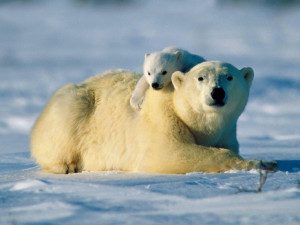 Mooallem: A lot of these guys spend months at a time out on the ice living in ice shelters and hunting and trapping, and it’s hard for them to conceive of a big, menacing polar bear as a victim, which is the story that the environmentalists are telling.
Mooallem: A lot of these guys spend months at a time out on the ice living in ice shelters and hunting and trapping, and it’s hard for them to conceive of a big, menacing polar bear as a victim, which is the story that the environmentalists are telling.
The videographer thought the video would get people outraged and motivated to help polar bears. The locals saw a video of someone not helping polar bears. They saw a video by someone who should have put down his camera and thrown the bears some meat. With all the arguments and compelling ideas about polar bears that everyone gets bombarded with, it’s easy to forget that they’re actual animals living in time and space.
Rumpus: That tension between the townspeople and the environmentalists shows how complex these issues are. It’s so easy to caricature attitudes about nature and animals. You’re either Ted Nugent or some kind of tree-sitting hippie. But it’s just not that simple, is it?
Mooallem: No. My editor said that this is not a book that ties everything up in a neat ribbon. It actually unties what we think are neat ribbons and then asks us to deal with the big mess on the floor. Not the greatest sales pitch, perhaps. I don’t think Oprah is going to go for that.
Rumpus: Or Martha Stewart.
Mooallem: Or Martha Stewart. But I think our job right now as people is to deal with the complexity, and to see through the catchphrases or [simplistic] ideas like “wilderness good, people bad” or “polar bears good, hunters bad.” We’re not going to get solutions to any of these problems thinking of them in clichéd terms.
Rumpus: I don’t want to ask you something trite like, “where do you think things will go from here,” but where do you think things will go from here?
Mooallem: Maybe in ten years somebody will write a book like this with more answers. But right now, I feel like we’re at a point where we just need to pull back the curtain and say this is where wild animals are now and this is where conservation is.
I remember right after I started working on this book, my daughter was two years old, and she was sitting in her highchair having a fit. There was a bowl of food in front of her and she threw it on the floor. It smashed, food spilled everywhere, and she suddenly shut up. I don’t know what she was thinking but it seemed pretty clear to me that she was astonished at the kind of wreckage she had created, the power she had exerted. She was just staring at this thing she had broken. I think that’s where we’re at.
WILD ONES book trailer from Jon Mooallem on Vimeo.




